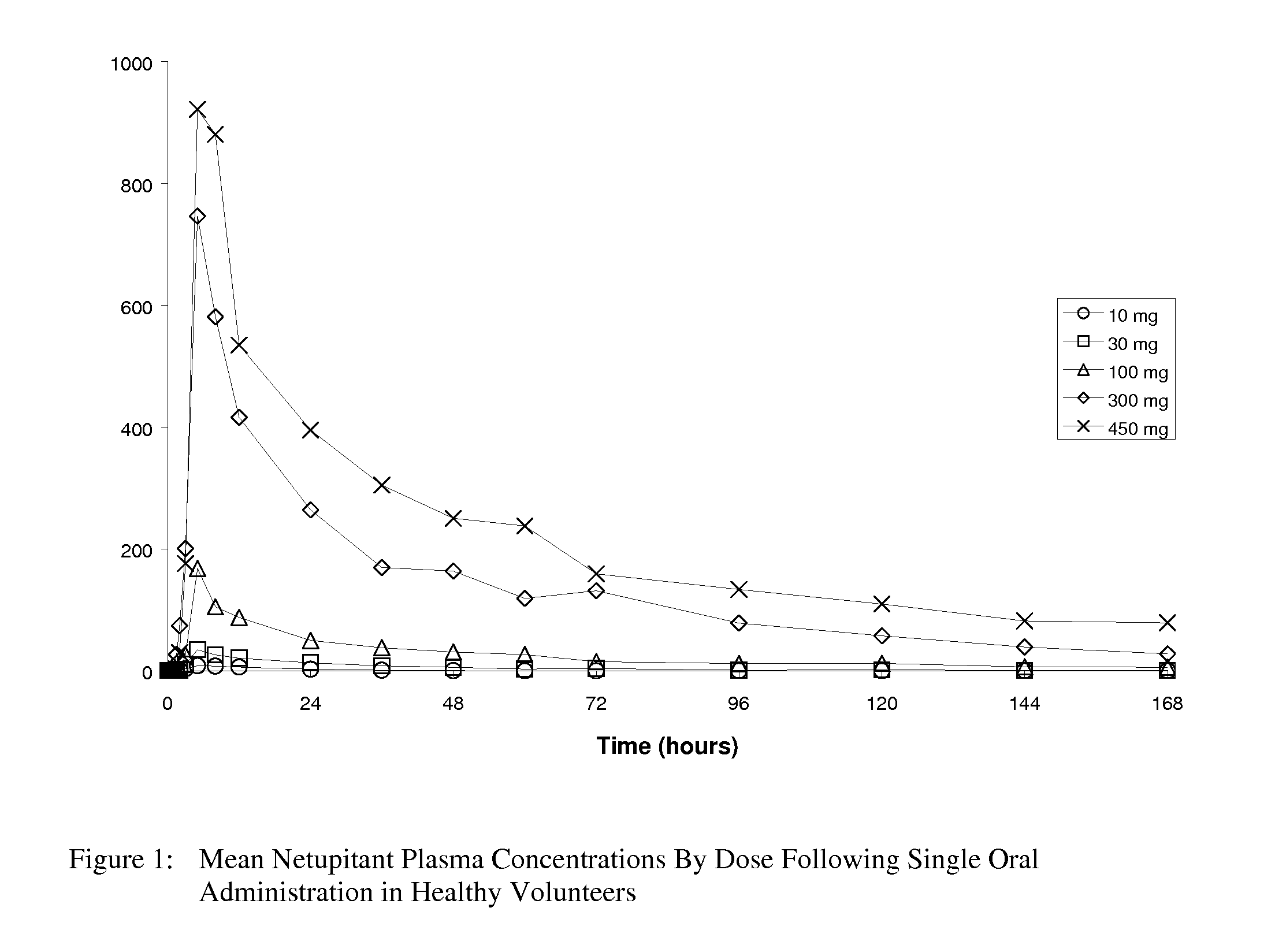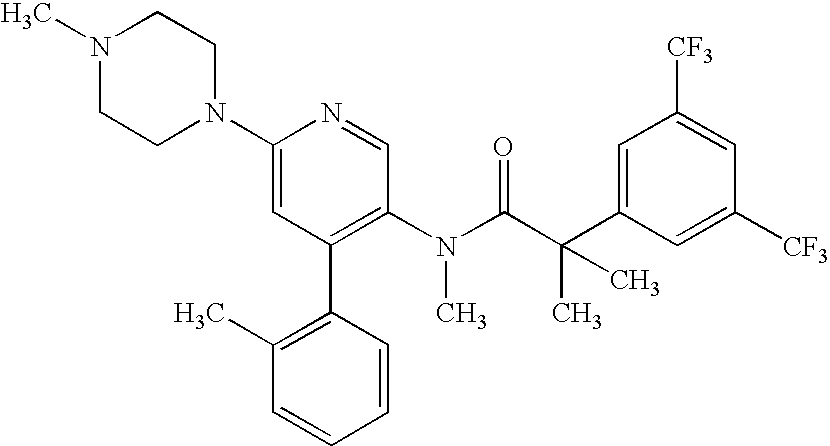Methods of Treating Bladder Dysfunction Using Netupitant
a technology of bladder dysfunction and netupitant, which is applied in the direction of urinary disorders, pharmaceutical active ingredients, organic active ingredients, etc., can solve the problems of neurological imbalance, involuntary discharge of urine or incontinence, and detrusor to contract at an inappropriately large amplitude or frequency, so as to reduce the frequency of bladder contraction, increase the retention of urine in the bladder, and reduce the amplitude of micturition pressure
- Summary
- Abstract
- Description
- Claims
- Application Information
AI Technical Summary
Benefits of technology
Problems solved by technology
Method used
Image
Examples
example 1
[0057]Objective
[0058]The effect of netupitant (N) was studied on cystometric parameters in acetic acid (AA)-induced overactive bladder (OAB) in anesthetized guinea-pigs. Results were compared with those obtained with a control and L-733,060 (L), another potent and selective NK1 receptor antagonist.
[0059]Methods
[0060]Adult female guinea-pigs were anesthetized with urethane, and the jugular vein and urinary bladder were catheterized for drug administration and intravesical pressure recording, respectively. The urinary bladder was continuously infused with either saline or 0.2% AA. After 30 min stabilization, N, L or their vehicle (glucose 5%) were administered in separate animals (n=10 per group). Intercontraction interval (ICI, sec), and amplitude of micturition (AM, mmHg) were analyzed at 10, 20, 40 and 60 min post administration. For each dose, maximal effects were expressed as % of variation from respective basal values. ED50% (doses inducing a 50% increase in ICI) were calculated...
example 2
[0070]Objective and Methods
[0071]The pharmacokinetic profile of netupitant (N) in humans was examined in a randomised, double-blind, placebo controlled study comprising 5 dose groups (10, 30, 100, 300 and 450 mg) with 6 subjects in each group, of whom four received netupitant and two received placebo.
[0072]Results
[0073]Following oral administration of netupitant, there was a lag of between 45 minutes and 3 hours before measurable amounts of the drug could be detected in plasma. After this lag time, the plasma concentration of netupitant increased in a first order fashion, with maximum levels reached at approximately 5 hours post-dose. The mean plasma concentration-time profiles for each dose are shown in FIG. 1.
[0074]Plasma exposure, judged by maximum concentration (Cmax) and AUC, increased super-proportionally with dose. Table 1 below summarizes the pharmacokinetic parameters associated with each dose.
TABLE 1Summary of the Mean (CV %) Pharmacokinetics of Netupitant in HealthyVolunt...
PUM
| Property | Measurement | Unit |
|---|---|---|
| time | aaaaa | aaaaa |
| volume | aaaaa | aaaaa |
| volume | aaaaa | aaaaa |
Abstract
Description
Claims
Application Information
 Login to View More
Login to View More - R&D
- Intellectual Property
- Life Sciences
- Materials
- Tech Scout
- Unparalleled Data Quality
- Higher Quality Content
- 60% Fewer Hallucinations
Browse by: Latest US Patents, China's latest patents, Technical Efficacy Thesaurus, Application Domain, Technology Topic, Popular Technical Reports.
© 2025 PatSnap. All rights reserved.Legal|Privacy policy|Modern Slavery Act Transparency Statement|Sitemap|About US| Contact US: help@patsnap.com


